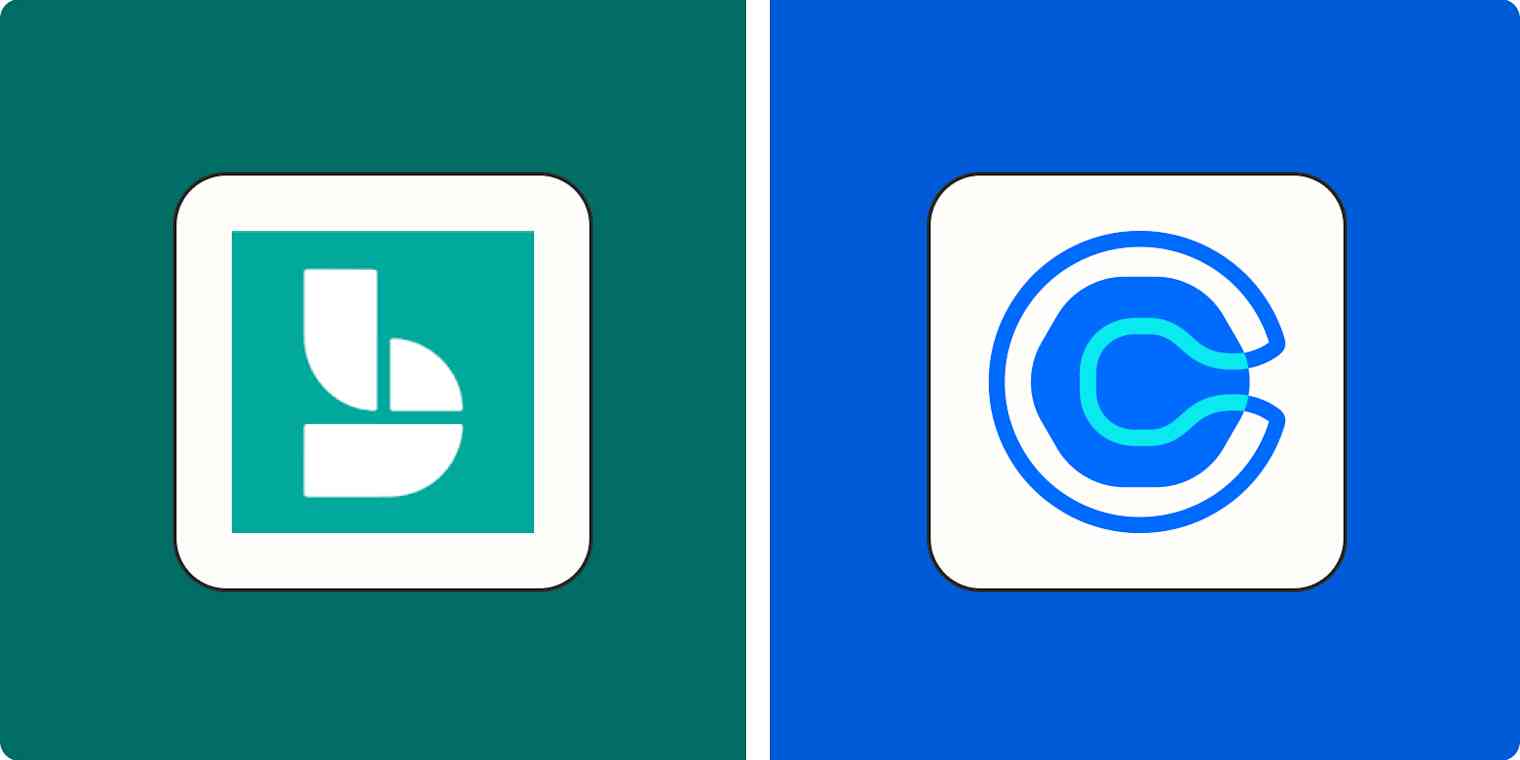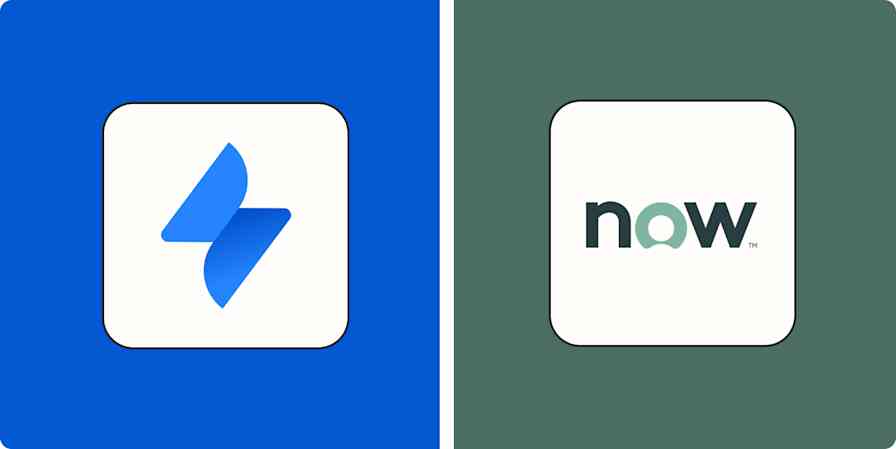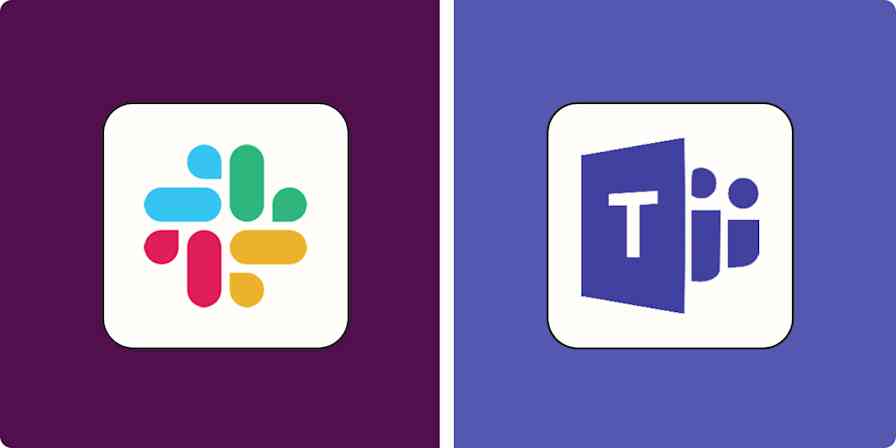Microsoft 365 is a massive suite of tools ranging from household names like Word and PowerPoint to more obscure apps (ever heard of Clipchamp?). Microsoft Bookings, which is included with Microsoft 365, is an alternative to better-known meeting scheduler apps like Calendly.
Let's get this out of the way: you probably haven't seen Microsoft Bookings on many best meeting scheduler lists. Rather than competing directly against powerful apps like Calendly, its raison d'être has more to do with offering essential features to get users to stay within the Microsoft ecosystem.
But Microsoft 365 has hundreds of millions of paid users, and if you're comparing Microsoft Bookings to Calendly, you're probably one of them. So here's the big question: is it worth it to pay for Calendly, or can Microsoft Bookings meet your needs at no extra cost?
I've used Calendly for years, and recently tested Microsoft Bookings to compare the two products head-to-head. In this article, I'll help you sort out which option makes sense for you.
Microsoft Bookings vs. Calendly at a glance
Here's a quick overview of what makes these two scheduling tools different:
Microsoft Bookings is best for Microsoft 365 users on a budget. If you're looking for a basic scheduling solution for booking one-off meetings with colleagues and clients, you'll be satisfied with Bookings.
Calendly is best for solopreneurs and teams, especially if you rely on advanced scheduling features like workflows, automation, and paid bookings. It's easy to use and integrates well with tools outside of the Microsoft ecosystem (like Zoom and Google Calendar).
| Microsoft Bookings | Calendly |
|---|---|---|
Pricing | ⭐⭐⭐⭐ Bookings is included in Microsoft 365, which costs as low as $6/user/month and comes with dozens of apps | ⭐⭐⭐ Calendly's cost of $12/month is reasonable, but its per-user pricing adds up fast for teams; its free plan can meet basic scheduling needs |
Ease of use | ⭐⭐⭐ Setup is easy for Microsoft 365 users, but the user experience is relatively clunky, and there's no mobile app | ⭐⭐⭐⭐⭐ A reliable and polished user interface full of time-saving features, plus a convenient mobile app |
Advanced features | ⭐⭐ Bookings is a much more basic tool than Calendly; it's missing features essential for many users, like paid bookings | ⭐⭐⭐⭐⭐ Calendly's workflows, automations, routing forms, and paid bookings make it a serious productivity tool |
Features for teams | ⭐⭐⭐ No groundbreaking features, but big companies using Microsoft 365 can use Bookings to easily schedule meetings (especially internally) | ⭐⭐⭐⭐⭐ Calendly offers team-friendly features like round robin events, cross-organizational analytics, and custom event types |
Integrations | ⭐⭐⭐⭐ Only integrates with other Microsoft tools natively; integrates with thousands of apps via Zapier | ⭐⭐⭐⭐⭐ 118 integrations; integrates with thousands more apps via Zapier |
Microsoft Bookings is more affordable
Picking software isn't just a matter of choosing the lowest-cost option. (If it were, we'd all just do some quick math and be done with it, rather than scrolling through comparisons like this one.) But price is a big factor, and here's what the math says: Microsoft Bookings is a lot cheaper than Calendly.
For Microsoft Bookings, you'll pay as little as $6/month per user. This fee also includes access to the rest of the Microsoft 365 family of apps, like Teams, OneDrive, Outlook, Word, Excel, PowerPoint, and dozens more. Calendly costs $12/month, or $20/month per user for teams. That means a 20-person team will pay $400/month to use Calendly, while the same team using Microsoft Bookings will pay as little as $120/month—while getting access to a broader set of Microsoft tools.
Having said that, Calendly does have a robust free plan, while Microsoft Bookings (via Microsoft 365) only offers a one-month free trial. But if you're already using Microsoft tools, then Bookings is free too.
Calendly is easier to use
Microsoft Bookings is a much more basic tool than Calendly, and you'd think its smaller feature set would give it a usability advantage. But in most cases, Calendly is the easier-to-use tool.
Let's start with an area of strength for Microsoft Bookings: integration with other Microsoft products. If you already have a Microsoft 365 subscription and rely on Outlook for your email and calendar, Bookings works seamlessly. As a simple way to book meetings with colleagues and customers, it's a solid solution.
Setting up Bookings is easy if you're already a part of the Microsoft 365 ecosystem. If you're not, good luck: it's a clunky process. You'll need to sign up for Microsoft 365; once you've done so, it's entirely unclear how to get to Bookings. (Eventually, I found out that clicking the unlabeled dots in the top left corner brought me to a list of Microsoft apps).
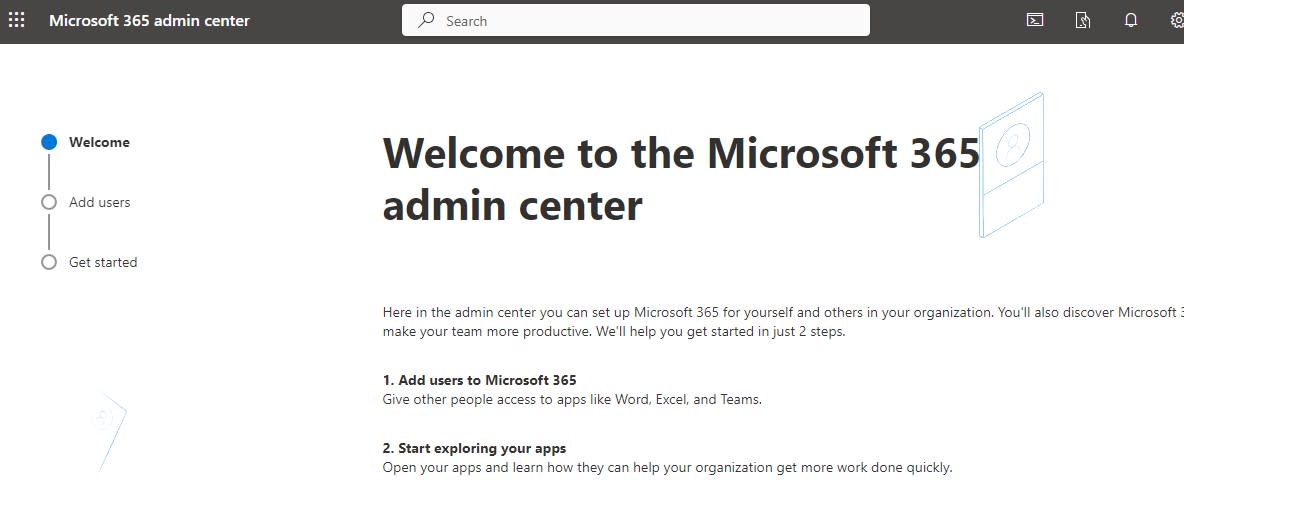
Once you make it to Bookings, you'll see a simple welcome screen. It's got the basics—a short onboarding checklist and a way to create multiple meeting types—but overall, you're on your own.

Trying to find your way to the settings is particularly confusing: I kept ending up on a screen with global Microsoft 365 settings rather than anything Bookings-specific.
Calendly has a cleaner (and less dated) interface, plus a clearer set of steps to guide you toward getting started. Plus, adjusting settings is way simpler since each event type has an intuitive sidebar showing all your options.
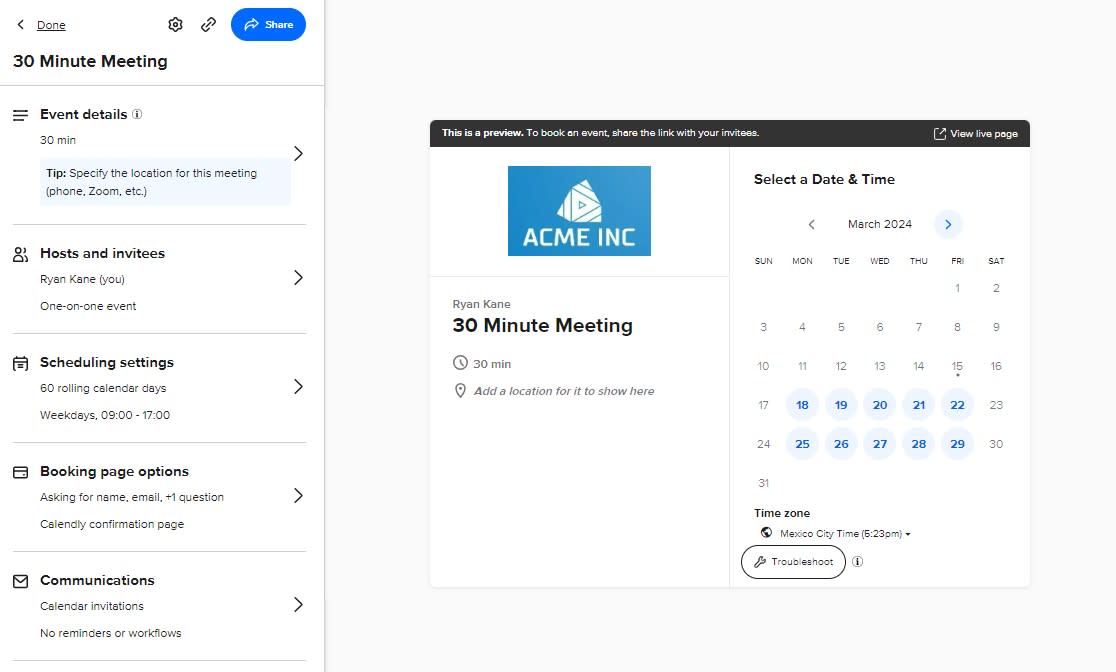
As you move through the Bookings setup process, it becomes clear that you're deep in "Microsoft Land," a magical place where it's assumed that people only want to use Microsoft products. (Presumably, Internet Explorer and the Microsoft Zune MP3 player are still popular here.) Want to connect your Outlook calendar to avoid double-booking meetings? No problem. Want to also connect your personal Google Calendar so you don't book a meeting when you're supposed to be picking your kid up from school? Sorry, no luck.
Calendly, on the other hand, allows you to connect up to six calendars—work and personal—from Google, Microsoft, and Apple.
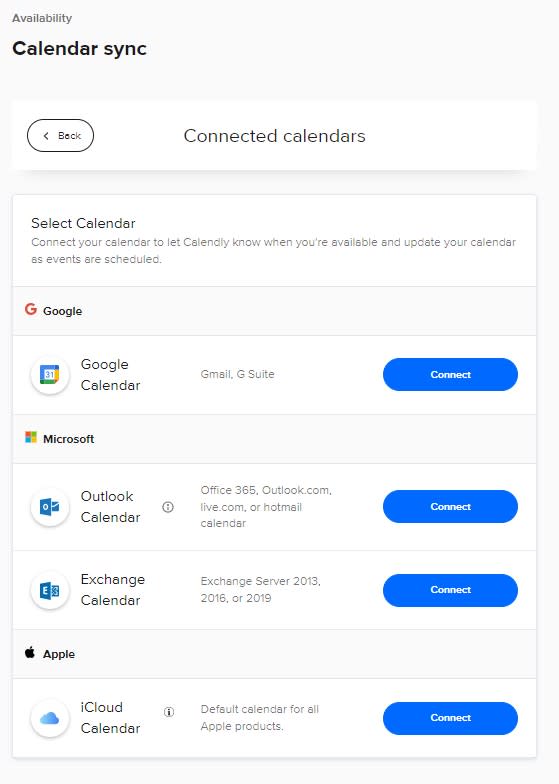
Apart from those gripes, Microsoft Bookings gets the basics right. If you're a die-hard Microsoft user, you can get up and running fast. You also get useful appointment booking options, like the ability to customize appointment duration, how far in advance people can book, and how much buffer time you'd like between appointments.
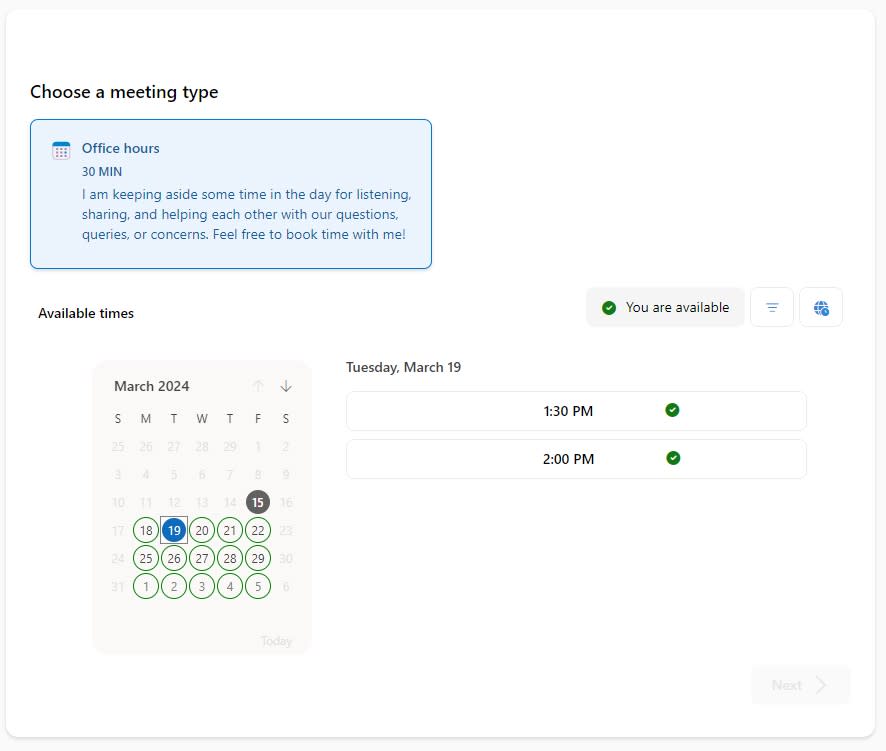
Still, Calendly offers all of that and more, and its features are packaged into a more intuitive and reliable piece of software. For example, the Calendly mobile app sends you convenient push notifications when someone books or cancels a meeting. Meanwhile, the Microsoft Bookings iOS and Android apps were abruptly retired in July 2023 due to low usage, to the surprise (and frustration) of users.
Many tasks are simply easier with Calendly: for example, I struggled to embed a Microsoft Bookings calendar into my website; when I finally found the code, it was an old-school <iframe> embed that didn't adapt well to different devices. Calendly's calendar embeds are slick and adapt nicely to different screen sizes, and you also have the option to let visitors book a meeting using a popup widget or popup text.

Calendly has more advanced features
Microsoft 365 users with simple meeting needs will probably do fine with Bookings. You'll get a customizable booking page, automatic email and mobile reminders, integration with other Microsoft tools (like Outlook and Teams), and the ability to allow multiple bookings for group events.
But for anything more than just the basics, you'll need Calendly. One missing Microsoft Bookings feature that especially stands out is paid bookings. Calendly integrates with Stripe, so you can charge users when they book a meeting with you. Plenty of consultants and coaches have built their businesses using paid bookings, but it's also useful for anyone who needs to manage the flow of people who want to "pick their brain" for 30 minutes. The fact that Microsoft Bookings doesn't offer this limits its usefulness for many solopreneurs and small businesses.
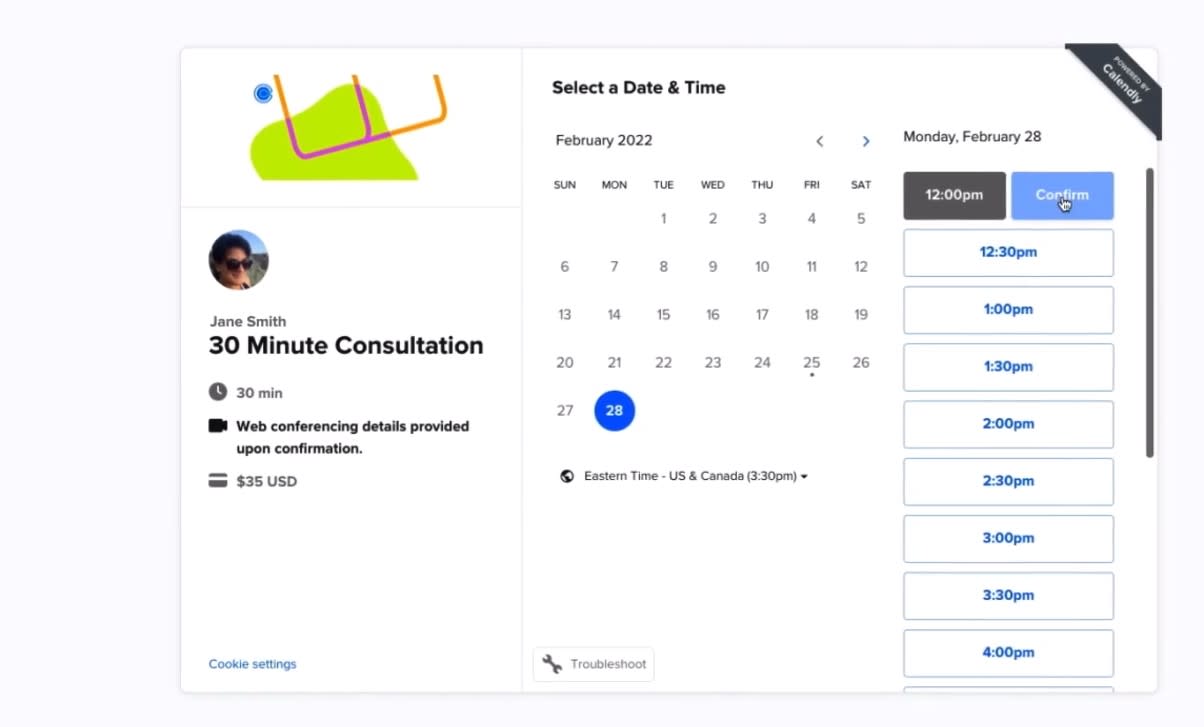
Automations and workflows are another big difference. With Microsoft Bookings, you can add reminder emails before your meeting and follow-up emails after, but Calendly's workflows are in a whole different league.
With Calendly, you can easily deploy automations by clicking on prebuilt workflows like Email a feedback survey or Send additional resources. You can also create your own workflows. Here's one I created that reduces no-shows to meetings by emailing (and texting) attendees to ask them to double-confirm their attendance.
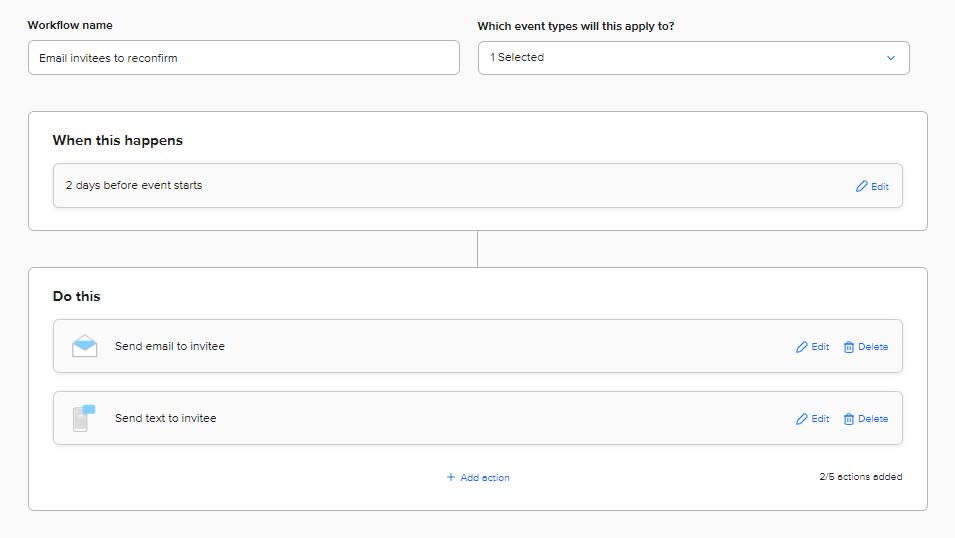
You can create up to 50 of these workflows. Calendly pulls them all into a single overview screen, making it easy to assign unique combinations of workflows to each event type.

All this means serious time savings for you and your team.
Calendly's features for teams are more robust
If you're a current Microsoft 365 user and you have a big team, you have a tough choice to make: Calendly has much better features for teams, but even a 10-person team using Calendly will cost you thousands of dollars per year.
Here's what Microsoft Bookings gets right: it's perfect for booking intra-company meetings, or sending prospects to your page to book a one-off meeting on Teams. And bigger companies will appreciate that with Bookings, you can create event types that are only bookable by members of your organization (something that Calendly can't do).
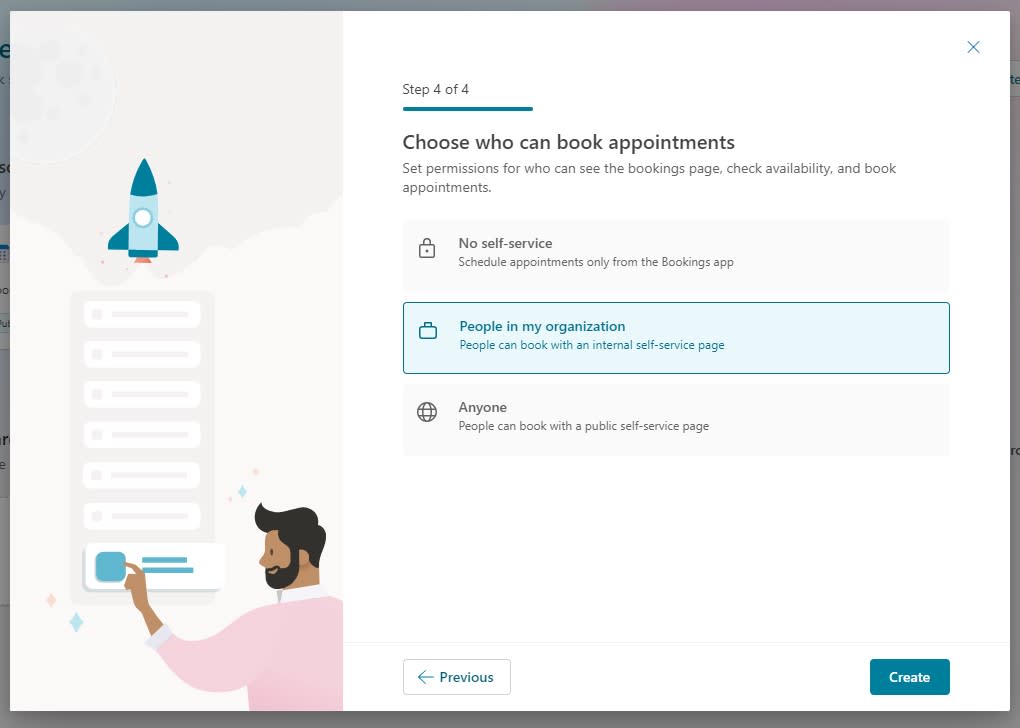
Sales teams and customer service teams will quickly run up against limitations with Microsoft Bookings, though. Calendly offers sophisticated ways to route customers to the right representative: for example, with Calendly's round robin event type, you can randomly distribute meetings to your team based on their availability. By adjusting your round robin settings, you can prioritize certain team members over others, or instruct Calendly to balance your team's workload so that no single person ends up with too many meetings.
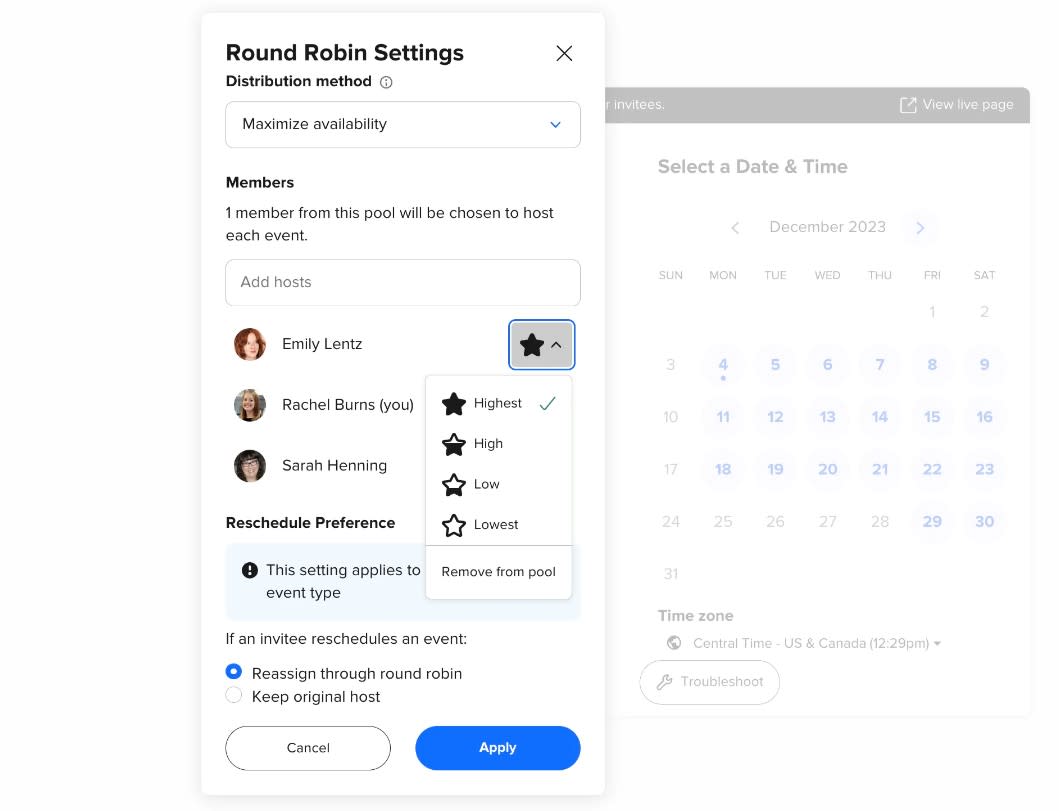
Here's an example of round robin booking in action: after someone books a demo on your company's website, Calendly can reference your CRM (if you've integrated it) to see whether they're a current customer or a prospect. For current customers, you can route them to their assigned point of contact on the customer success team for the demo; if that person isn't available, you can randomly assign them to someone in the broader pool of customer success reps. For new prospects requesting a demo, you can set up a round robin system that distributes meetings to your sales team based on their availability.
Using Calendly's routing forms feature, you can take this a step further and screen prospects before they're invited to book a meeting. You can offer a booking option only to prospects who meet your criteria, or gather more information (like industry or company size) so you can route them to the best-fit sales rep.
While Microsoft Bookings does let you distribute appointments to a group, that's where your options end: there aren't many options to fine-tune your team's workload or route certain appointment types to certain teams.
Calendly offers more integrations, but Microsoft Bookings syncs seamlessly with Microsoft Office
For Microsoft users, Bookings offers a seamless experience. If your team exclusively uses Outlook and Teams, the level of native integration you'll get with Bookings is unbeatable.
Calendly, on the other hand, offers over 100 integrations, including popular apps that Microsoft doesn't support. (Want to use Zoom or Google Calendar? Go with Calendly).
But using Zapier, you can connect both Calendly and Microsoft Bookings to nearly any app in the world. Learn more about how to automate Calendly or how to automate Microsoft 365. Or, use one of these pre-made workflows to get started.
Add or update ActiveCampaign contacts for new Calendly invitees
Add tagged subscribers to ConverKit from new Calendly events
Create detailed Google Calendar events from new events in Microsoft Office 365
Microsoft Bookings vs. Calendly: which comes out ahead?
You can save hundreds or thousands of dollars per year by choosing Microsoft Bookings over Calendly (especially if you're already a Microsoft 365 customer). But there are trade-offs. If you're still unsure which to choose, consider these guidelines.
Go with Microsoft Bookings if you're a Microsoft 365 customer and have basic scheduling needs. Bookings integrates automatically with Outlook and Teams, and you and your team get access to a reliable meeting scheduler at no extra cost.
Go with Calendly if you want advanced scheduling features, especially if you run a sales or customer service team (or if you use non-Microsoft tools like Zoom). You'll pay more, but the value of Calendly's workflows, robust team options, and productivity features easily justify the cost.
Related reading:
